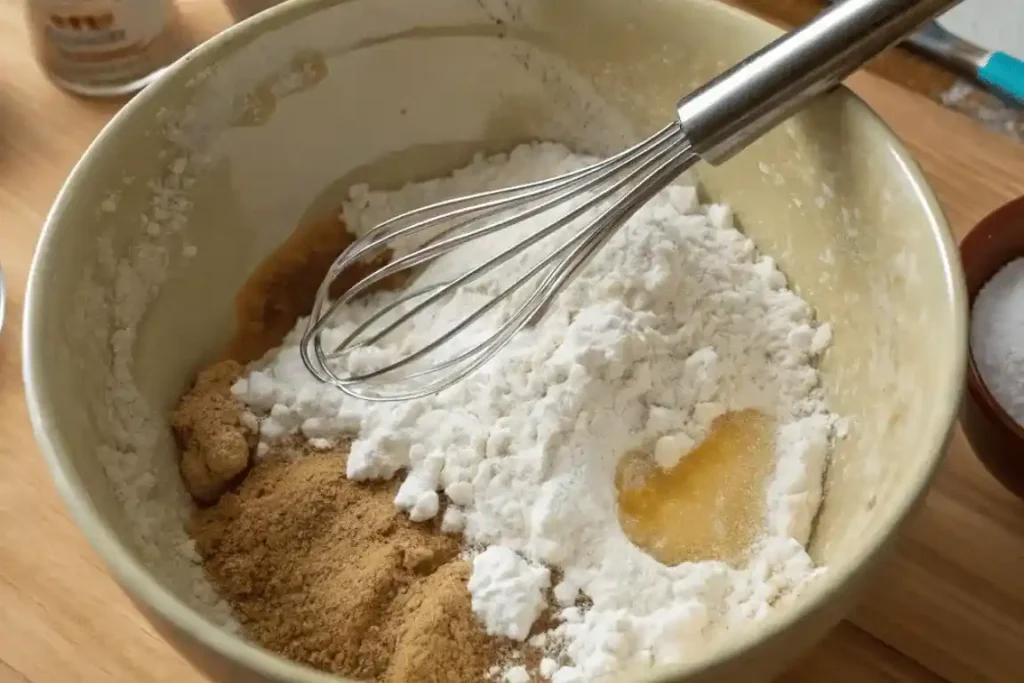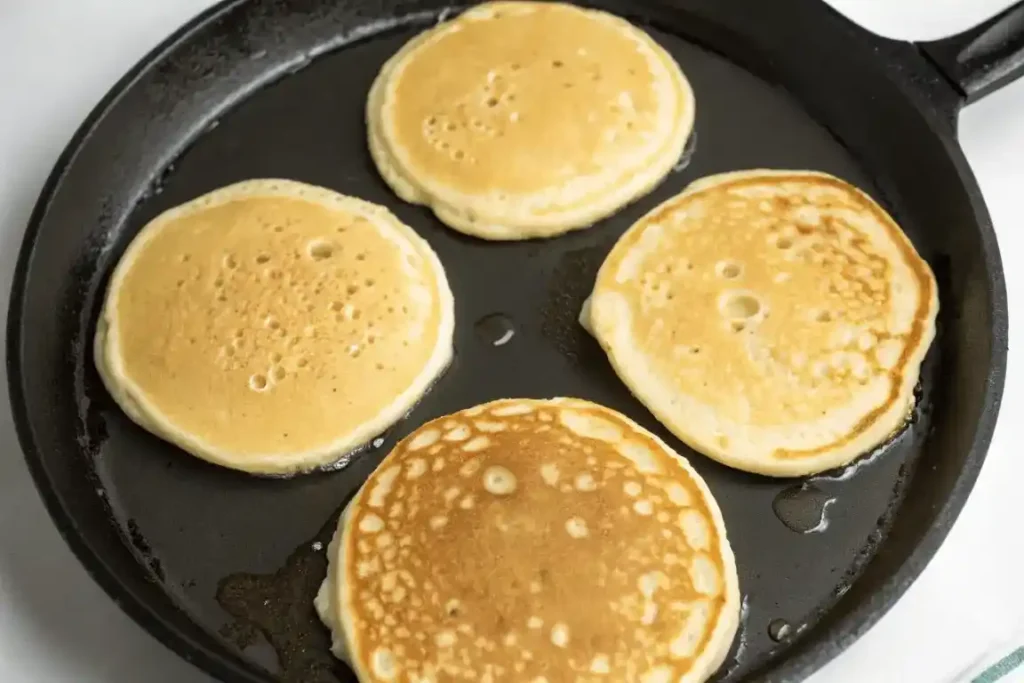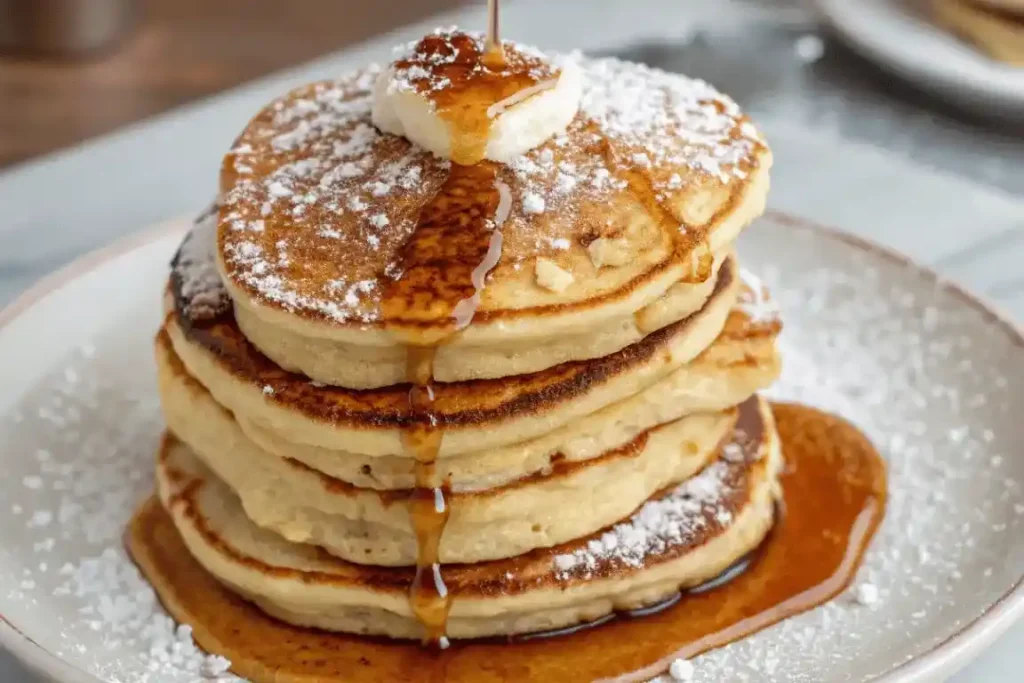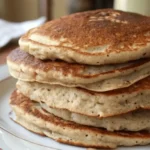Tired of pancakes that turn out dense, dry, or gritty? This buckwheat pancakes recipe is your solution. It delivers a stack that’s soft, fluffy, and full of rich, nutty taste that doesn’t overpower. Whether you’re avoiding gluten or just want a healthier breakfast, this method ensures great texture without the usual issues. The secret? Understanding the difference between light and dark buckwheat flour — a simple switch that changes everything. Keep reading to learn the tricks that make these pancakes stand out every time.
Table of Contents
Why This is the Last Buckwheat Pancake Recipe You’ll Ever Need
Fluffy Texture Without the Guesswork
This recipe uses a proven combo of baking soda and an acid like buttermilk to give you pancakes that rise beautifully and stay tender inside.
Big Flavor Without the Bitterness
You’ll learn how to choose the right buckwheat flour to get that nutty flavor people love without the harsh aftertaste that ruins most recipes.
The Only Flour Breakdown You’ll Need
We go beyond the basics and show you how light and dark buckwheat flours differ in taste, texture, and color so you can pick what works best for your kitchen.
Simple Ingredients, No Stress
Every item in this recipe is easy to find, and the clear steps guide you without confusion. You’ll also see key photos that show you exactly what each stage should look like.
No More Pancake Problems
Our FAQ section addresses all the usual issues, from gummy batter to dry edges. You’ll learn why things go wrong and how to fix them instantly.
Ingredients Needed
For the Pancake Base
• 1 cup plus 1 tablespoon buckwheat flour (use all buckwheat or combine with your preferred flour for a lighter bite)
• 1 tablespoon granulated sugar
• 1 teaspoon baking powder
• 1 teaspoon baking soda (The key leavening agent. It needs an acid to work its magic.)
• ¼ teaspoon salt
For the Wet Mixture
• 1¼ cups buttermilk, well shaken (or a plant-based version with vinegar for dairy-free) (The secret to fluffiness. Its acidity reacts with the baking soda to create air bubbles, making the pancakes incredibly light.)
• 2 large eggs
• ½ teaspoon pure vanilla extract
For Cooking
• Butter for greasing the skillet or griddle (or use a neutral oil for a dairy-free option)
Each ingredient works together to build pancakes that are rich in taste and light in texture. Use fresh baking powder and baking soda for the best rise.
How to Make Buckwheat Pancakes
1- Mix the Dry Ingredients
In a medium bowl, whisk together the buckwheat flour, sugar, baking powder, baking soda, and salt until evenly combined.
2- Prepare the Wet Mixture
In a separate bowl or large measuring cup, combine the buttermilk, eggs, and vanilla extract. Beat lightly until smooth and well blended.

3- Combine Wet and Dry Mixtures
Pour the wet mixture into the bowl of dry ingredients. Stir gently until the batter just comes together. Some small lumps are fine. (Why not overmix? Overmixing develops gluten-like bonds and knocks the air out, leading to tough, rubbery pancakes.)
Let the batter rest for 5 to 10 minutes to thicken and develop flavor. This is a crucial step! (Why this works: Resting the batter allows the buckwheat flour to fully hydrate, resulting in a thicker consistency and a more tender, flavorful pancake.)

4- Heat the Skillet
Place a skillet or griddle over medium-low heat. If using an electric griddle, set it to 350 degrees Fahrenheit. Once hot, brush with a small amount of butter to coat the surface evenly.
5- Cook the Pancakes
Give the batter a light stir if it has settled. Scoop about ¼ cup of batter for each pancake onto the skillet. Cook for 2 to 3 minutes until bubbles begin to form on the surface and the edges start to look dry. Flip and cook the other side for 1 to 2 minutes until golden brown.
6- Keep Pancakes Warm
Place cooked pancakes on a wire rack or a baking sheet in a 200 degree Fahrenheit oven to keep them warm while you finish the batch.
7- Repeat and Serve
Stir the batter gently between rounds. Re-grease the skillet as needed and repeat the cooking steps. Serve the pancakes hot with your favorite toppings.

A Key to Success: Light vs. Dark Buckwheat Flour
What is Dark Buckwheat Flour
Dark buckwheat flour comes from whole groats that still have the outer hull. These groats are often roasted before grinding. This flour has a bold, earthy flavor that is deeply nutty and sometimes slightly bitter. Pancakes made with dark buckwheat tend to have a deeper color and a rustic, denser texture.
What is Light Buckwheat Flour
Light buckwheat flour is milled from hulled groats, meaning the dark outer layer is removed before grinding. This flour has a milder, cleaner flavor that is less bitter. Pancakes made with light buckwheat have a softer texture and a lighter color, making them more like traditional pancakes in taste and appearance.
Our Recommendation for This Recipe
For pancakes that are fluffy, tender, and appealing to a wider crowd, use light buckwheat flour. If you prefer a more intense flavor and a heartier texture, dark buckwheat flour is your choice. Both can work, but light buckwheat gives the best balance of flavor and softness.
A Dietitian’s Insight: Maximizing Nutritional Value
“Many people reach for buckwheat because it’s a gluten-free, healthy choice, but they often miss a key detail. The darker buckwheat flour, which includes more of the outer hull, typically retains higher levels of dietary fiber and antioxidants.
While light buckwheat flour is fantastic for a milder taste and still a great source of magnesium and plant-based protein, choosing the dark variety can give you an extra nutritional boost. Either way, you’re making a much more nutrient-dense choice than traditional white flour pancakes.” – Dr. Lisa Martin, Registered Dietitian
Easy Variations and Dietary Substitutions
| To Make It | Use This Instead |
| Vegan | Replace eggs with flaxseed egg and use plant-based milk mixed with vinegar. Swap butter for coconut oil or vegan butter. |
| Dairy-Free | Use any plant-based milk mixed with a teaspoon of vinegar. Replace butter with a neutral oil or dairy-free butter. |
| Egg-Free | Substitute each egg with one tablespoon of flaxseed meal mixed with three tablespoons of water. Let it sit for five minutes before using. |
| Extra Light and Fluffy | Use half buckwheat flour and half all-purpose or gluten-free flour blend for a softer texture. |
| Refined Sugar-Free | Use maple syrup, coconut sugar, or mashed banana instead of white sugar to keep the sweetness natural. |
This table gives you easy ways to adjust the recipe without losing texture or flavor.
How to Store and Reheat Buckwheat Pancakes
In the Refrigerator
Let the pancakes cool completely before storing. Place them in a single layer inside an airtight container or stack them with parchment paper between each one. Store in the fridge for up to three days.
In the Freezer
For best results, arrange the cooled pancakes in a single layer on a baking sheet. Freeze for about one hour until firm. Then transfer them to a freezer-safe bag or container. Label with the date and store for up to two months.
Best Reheating Methods
To reheat, use a toaster for a quick, crispy edge. For soft pancakes, warm them in the oven at 300 degrees Fahrenheit for about 8 to 10 minutes. You can also microwave them for 30 to 45 seconds, though the texture will be softer.
Topping Ideas and Serving Suggestions
Classic
Top your pancakes with a generous drizzle of maple syrup and a pat of butter for the timeless breakfast favorite.
Fruity
Add fresh berries, sliced bananas, or a spoonful of warm fruit compote for a naturally sweet and colorful finish.
Rich and Creamy
Try a dollop of Greek yogurt, a swirl of whipped cream, or a spoon of almond or peanut butter for a creamy twist.
Savory Option
Skip the sugar and vanilla in the batter. Serve your pancakes with a fried egg, chopped chives, and a sprinkle of salt for a satisfying savory version.
Mix and match these ideas to find your favorite way to enjoy buckwheat pancakes.
For a refreshing and gut-friendly pairing, try serving your pancakes with a glass of our Berry Kefir Smoothie. Packed with probiotics and natural sweetness, it complements the earthy flavor of buckwheat beautifully and adds a nutritious boost to your breakfast.
Conclusion
If you’re searching for the perfect buckwheat pancake recipe, this one delivers every time. With its light, fluffy texture and rich nutty flavor, it’s designed to solve common pancake problems while offering flexibility for different diets. You’ll also learn the difference between light and dark buckwheat flour, which is the key to getting the taste and texture just right.
If you make this buckwheat pancake recipe, please leave a comment and star rating below. I love hearing how it turned out for you and what toppings you used.
Share your version on Pinterest or Facebook and tag your favorite twist. What variations did you try? Let us know in the comments.
Frequently Asked Questions
1. What is the difference between buckwheat pancakes and regular pancakes?
Buckwheat pancakes use buckwheat flour, which gives them a nuttier flavor and a slightly denser texture. Regular pancakes usually use all-purpose flour, which results in a lighter taste and feel.
2. Can you make pancakes with just buckwheat flour?
Yes, you can use 100 percent buckwheat flour. Light buckwheat is best for a softer bite, while dark buckwheat gives a heartier texture and stronger flavor.
3. What does buckwheat pancake taste like?
They have a rich, nutty flavor with an earthy note. Light buckwheat makes them milder, while dark buckwheat offers a bolder taste.
4. Is Aunt Jemima buckwheat pancake mix discontinued?
Yes, the Aunt Jemima brand has been rebranded as Pearl Milling Company, and the buckwheat pancake mix is no longer widely available.
5. What happened to Buckwheat pancake mix?
Many store-bought buckwheat pancake mixes have been discontinued or are harder to find. Making them from scratch gives better control over flavor and ingredients.

Buckwheat Pancakes
- Total Time: 25 minutes
- Yield: 4 servings 1x
Description
Learn to make foolproof, fluffy buckwheat pancakes from scratch. Our ultimate guide includes pro tips, variations, and the secret to perfect results every time.
Ingredients
- 1 cup plus 1 tablespoon buckwheat flour (use all buckwheat or combine with your preferred flour for a lighter bite)
- 1 tablespoon granulated sugar
- 1 teaspoon baking powder
- 1 teaspoon baking soda
- ¼ teaspoon salt
- 1¼ cups buttermilk, well shaken (or a plant-based version with vinegar)
- 2 large eggs
- ½ teaspoon pure vanilla extract
- Butter for greasing the skillet or griddle (or neutral oil)
Instructions
- In a medium bowl, whisk together the buckwheat flour, sugar, baking powder, baking soda, and salt.
- In a separate bowl, combine buttermilk, eggs, and vanilla extract. Beat lightly.
- Pour wet mixture into dry ingredients. Stir gently until just combined. Let rest 5–10 minutes.
- Heat a skillet or griddle over medium-low heat. Brush with butter or oil.
- Stir batter lightly. Scoop ¼ cup per pancake. Cook 2–3 minutes until bubbles form and edges dry. Flip and cook 1–2 more minutes.
- Keep cooked pancakes warm on a rack or baking sheet in a 200°F oven.
- Repeat until batter is used up. Re-grease skillet as needed. Serve hot with desired toppings.
Notes
For softer pancakes, use light buckwheat flour. Resting the batter allows better hydration and improves texture. Use fresh leavening for the best rise.
- Prep Time: 10 minutes
- Cook Time: 15 minutes
- Category: Breakfast
- Method: Stovetop
- Cuisine: American
Nutrition
- Serving Size: 2 pancakes
- Calories: 210
- Sugar: 4g
- Sodium: 390mg
- Fat: 6g
- Saturated Fat: 2g
- Unsaturated Fat: 3g
- Trans Fat: 0g
- Carbohydrates: 30g
- Fiber: 3g
- Protein: 8g
- Cholesterol: 55mg

